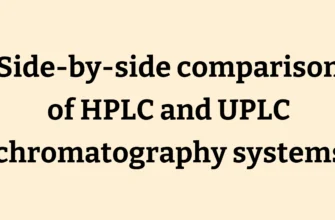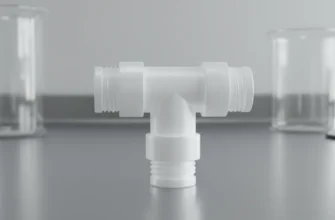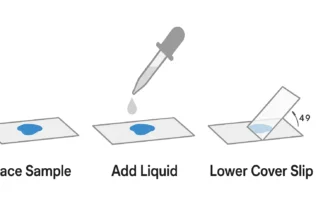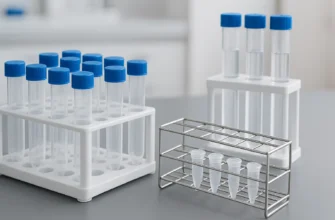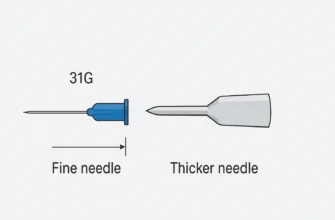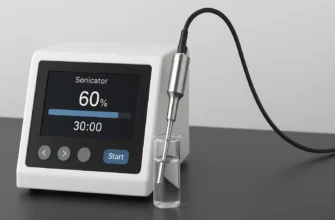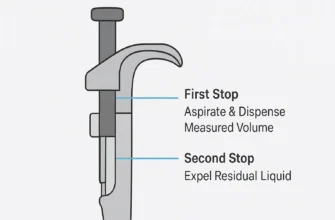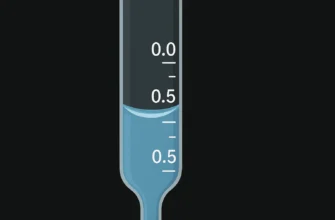Choosing the Right Titration Burette for Your Laboratory Needs
Key Highlights
A titration burette is an essential precision instrument for performing accurate volumetric measurements in analytical chemistry. Its primary function is to dispense precise volumes of titrant solution to determine the concentration of an unknown solution (analyte) through controlled chemical reactions. Unlike other volumetric glassware, a titration burette features precision graduations, typically marked to 0.1 mL or better, and a precision stopcock that allows controlled flow from rapid dispensing to drop-by-drop addition. Burettes are available in manual (glass), automatic, and digital/electronic models to accommodate different laboratory requirements and throughput needs.
The main function is to dispense precise volumes of titrant to determine analyte concentrations through titration procedures. Modern burettes come in manual, automatic, and electronic models with varying levels of precision and automation. Accurate meniscus reading at eye level is essential to avoid parallax error. Proper technique enables concentration determination with high precision, often within Class A accuracy limits. Regular cleaning and maintenance protocols ensure reliable, reproducible results.
Introduction
In analytical chemistry, precision measurement forms the foundation of reliable quantitative analysis. The titration burette stands as one of the most critical instruments for achieving accurate liquid dispensing in laboratory titration procedures. This graduated glass or plastic tube, equipped with a precision stopcock mechanism, enables chemists to dispense exact volumes of liquid with exceptional control and accuracy. Whether determining solution concentrations through acid-base titrations, conducting complexometric analyses, or performing redox reactions, mastering burette selection and operation is essential for generating reliable, reproducible analytical results.
Understanding Titration Burettes and Their Role in the Laboratory
A titration burette is a long, precisely graduated glass or plastic tube equipped with a stopcock valve at the bottom, designed to dispense accurate and variable volumes of liquid during analytical procedures. The primary purpose of titration is to determine the concentration of an analyte solution by reacting it with a titrant solution of known concentration, proceeding until the chemical reaction reaches completion at the equivalence point.
This process represents fundamental quantitative analysis methodology used across diverse analytical applications, from traditional acid-base titrations involving strong acids like hydrochloric acid to sophisticated complexometric and redox titrations. The burette’s precision design enables controlled liquid delivery that would be impossible to achieve with less accurate volumetric glassware.
How Titration Burettes Function in Chemical Analysis
The precision of a titration burette lies in its ability to control liquid delivery from rapid flow to individual drop dispensing. In typical analytical procedures, the burette contains the titrant solution of known concentration, which is gradually added to a reaction vessel containing the analyte solution of unknown concentration.
During titration, a chemical reaction occurs between the titrant and analyte. The titrant is added incrementally until the reaction reaches completion, indicated by the equivalence point. Visual indicators are frequently employed to signal this endpoint through observable color changes that occur when stoichiometric equivalence is achieved.
By measuring the exact volume of titrant solution required to reach the endpoint, analysts can calculate the analyte concentration using stoichiometric relationships. This controlled, measurable approach makes the burette indispensable for quantitative analytical chemistry, enabling precision that significantly exceeds other volumetric measurement methods.
Essential Components: Materials, Graduations, and Stopcock Systems
A burette’s effectiveness depends on the integration of several key components, each engineered for precision and chemical compatibility. The main body consists of a long tube with precise graduation markings, typically subdivided to 0.1 mL with the ability to estimate readings to ±0.05 mL or better.
Material Selection for Different Applications
The burette material choice depends on intended chemical applications and required durability:
Borosilicate Glass Burettes: Manufactured from borosilicate glass 3.3, these burettes provide superior chemical resistance and thermal stability compared to standard glass. The transparency allows clear visualization of liquid levels and color changes during titration.
Plastic Burettes: Constructed from materials like polypropylene, these offer enhanced durability and resistance to breakage while maintaining reasonable chemical compatibility.
Digital/Electronic Burettes: These advanced instruments incorporate electronic displays and motor-controlled dispensing systems for enhanced precision and reduced human error.
Stopcock Technology and Performance
The stopcock represents the critical flow control mechanism. Modern burettes employ different stopcock technologies:
PTFE (Polytetrafluoroethylene) Stopcocks: These self-lubricating systems eliminate grease requirements while preventing seizure and contamination issues. The chemical inertness of PTFE makes these stopcocks ideal for diverse chemical applications, including corrosive acids and bases.
Glass Key Stopcocks: Traditional systems utilizing carefully ground glass components requiring thin lubricant layers for proper sealing and smooth operation.
Rotaflo® and Specialized Systems: Advanced stopcock designs provide enhanced precision through dual-plug mechanisms that help minimize common titration errors.
Comparing Different Types of Titration Burettes
Modern burettes encompass three main categories: manual (glass), automatic, and electronic systems. Each type offers distinct advantages suited to different laboratory environments, throughput requirements, and precision needs.
| Feature | Manual Burette | Automatic Burette | Electronic Burette |
|---|---|---|---|
| Operation | Manual stopcock control | Automatically refills to zero mark | Motor-controlled piston, push-button dispensing |
| Accuracy | ±0.03-0.10 mL (Class A/B) | Good, reduces refilling errors | Very high, minimizes human error |
| Best Applications | Educational settings, routine analysis | Continuous or multiple titrations | High-throughput labs, quality control |
| Cost Range | Low ($50-200) | Moderate ($300-800) | High ($800-3000) |
| Maintenance | Regular cleaning, stopcock lubrication | Moderate maintenance requirements | Minimal maintenance, electronic calibration |
Manual vs. Automatic Burettes: Capabilities and Applications
Manual Burettes remain the standard choice in many laboratories, particularly for educational and routine analytical work. These instruments, typically available in 10, 25, and 50 mL capacities, rely entirely on operator skill for stopcock control. Class A glass burettes offer the highest precision for analytical work with tolerances of ±0.03 mL for 25 mL burettes, while Class B burettes provide ±0.10 mL accuracy suitable for general laboratory applications.
Automatic Burettes (self-zeroing burettes) are engineered for efficiency in high-throughput environments. These systems connect to reservoir bottles that automatically refill the burette to the zero mark after each use, significantly reducing operator time and effort. This feature proves particularly valuable in industrial laboratories performing numerous consecutive titrations.
The selection between manual and automatic systems often balances cost considerations, convenience requirements, and analytical throughput. Manual burettes excel for educational applications and laboratories with moderate workloads, while automatic systems optimize productivity in industrial quality control environments.
Electronic and Digital Burette Technologies
Electronic Burettes (E-Burettes) represent the most advanced burette technology, incorporating motor-controlled piston systems, digital displays, and sophisticated control interfaces. These instruments eliminate manual dispensing variability through pre-calibrated dispensing speeds, including precise dropwise control at 0.010 mL/sec.
Digital Burettes provide electronic volume displays while maintaining manual piston operation through hand-wheel mechanisms. These systems offer improved reading accuracy compared to traditional glass graduations while remaining more affordable than fully electronic models.
Advanced Features of Electronic Systems:
-
Motor-controlled piston movement eliminating speed variations
-
Multiple pre-set dispensing speeds for different titration phases
-
Recirculation modes preventing reagent loss during system purging
-
Data storage and PC interface capabilities for automated record-keeping
-
Touchscreen interfaces with graphical user guidance
Proper Burette Usage and Reading Techniques
Correct burette operation requires systematic preparation, precise reading techniques, and awareness of common measurement errors. Proper setup includes secure vertical mounting using burette clamps, thorough cleaning protocols, and careful attention to air bubble elimination.
Preparation and Setup Procedures
Effective titration begins with proper burette preparation following established protocols:
-
Cleaning Protocol: Rinse the burette thoroughly with distilled water, followed by small volumes of the intended titrant solution to prevent dilution effects.
-
Mounting and Stability: Secure the burette vertically using appropriate clamps attached to stable ring stands to prevent movement during operation.
-
Filling and Air Bubble Removal: Fill the burette using a funnel to levels above the zero mark, then open the stopcock momentarily to expel trapped air bubbles from the tip and stopcock mechanism.
-
Conditioning: Perform multiple rinses with small volumes of titrant solution to ensure homogeneous concentration throughout the burette system.
Accurate Volume Reading and Error Prevention
Precise volume measurement requires consistent meniscus reading techniques to achieve reliable analytical results. The curved liquid surface (meniscus) must be read consistently to avoid parallax errors that can significantly impact measurement accuracy.
Essential Reading Techniques:
-
Eye Level Positioning: Position your eye at the same level as the meniscus to avoid parallax error. Looking from above or below causes apparent volume shifts.
-
Meniscus Reading: Read the bottom of the meniscus for clear liquids, using this position consistently for all measurements.
-
Reading Card Usage: Employ a black reading card positioned approximately one graduation below the meniscus to sharpen the meniscus appearance and improve reading consistency.
Common Errors to Prevent:
-
Parallax error from incorrect eye positioning
-
Air bubbles in the stopcock or tip causing volume inaccuracies
-
Insufficient rinsing leading to titrant dilution
-
Exceeding the endpoint due to rapid titrant addition
Maintenance, Cleaning, and Troubleshooting Procedures
Proper burette maintenance ensures long-term accuracy and prevents contamination that could compromise analytical results. Regular cleaning protocols and proactive maintenance practices are essential for reliable performance.
Standard Cleaning Procedures
Daily Cleaning Protocol:
After each use, immediately drain remaining solutions and perform thorough rinsing to prevent chemical residue buildup:
-
Initial Rinse: Drain the burette completely and rinse multiple times with distilled or deionized water.
-
Interior Cleaning: For stubborn deposits, use appropriate laboratory detergents and burette brushes, followed by extensive water rinsing.
-
Final Preparation: Perform final rinses with distilled water. If immediate reuse is intended, condition with small volumes of the next titrant solution.
Intensive Cleaning for Digital/Electronic Burettes:
Advanced burette systems require specialized cleaning procedures:
-
Set valve to recirculation mode and rinse completely multiple times
-
Disassemble removable components (discharge tubes, valve mechanisms) for thorough cleaning
-
Use appropriate cleaning agents compatible with PTFE and electronic components
-
Reassemble carefully following manufacturer specifications
Maintenance Best Practices
Stopcock Maintenance:
-
PTFE Stopcocks: Require minimal maintenance due to self-lubricating properties
-
Glass Stopcocks: Need periodic lubrication and careful handling to prevent seizure
-
Regular inspection for smooth operation and leak-free sealing
Storage Requirements:
-
Store burettes vertically in designated racks or clamps
-
Maintain slightly open stopcock position to prevent sticking
-
Environmental conditions: -20°C to +50°C with 5-95% relative humidity
Quality Assurance:
-
Regular calibration verification using gravimetric methods
-
Inspection for chips, cracks, or graduation marking clarity
-
Documentation of maintenance activities and calibration records
Conclusion
Selecting the appropriate titration burette requires careful consideration of analytical requirements, laboratory throughput, and precision needs. Understanding the fundamental differences between manual, automatic, and electronic systems enables informed decisions that optimize both analytical accuracy and operational efficiency. Whether choosing traditional glass burettes for educational applications or advanced electronic systems for high-precision analytical work, proper usage techniques and maintenance protocols ensure reliable, reproducible results. Investment in appropriate burette technology, combined with systematic operational procedures, forms the foundation for successful quantitative analytical chemistry across diverse laboratory environments.
Frequently Asked Questions
What is the primary function of a titration burette in laboratory settings?
A titration burette’s main function is to dispense precise volumes of titrant solution to determine the exact concentration of an unknown analyte through controlled chemical reactions. The instrument enables drop-by-drop liquid addition with measurements accurate to ±0.05 mL or better, making it essential for quantitative analytical procedures.
How do you select the appropriate burette for laboratory applications?
Burette selection depends on required accuracy (Class A for ±0.03 mL precision vs. Class B for ±0.10 mL), chemical compatibility (glass vs. plastic materials), throughput requirements (manual vs. automatic systems), and budget considerations. Glass burettes suit general analytical work, while electronic burettes optimize high-precision applications and automated laboratories.
What distinguishes acid burettes from standard burettes?
Acid burettes feature PTFE stopcocks specifically designed for chemical resistance against corrosive acids and oxidizing agents, while standard burettes may use glass stopcocks or rubber valve systems. The PTFE material provides superior chemical compatibility and requires minimal maintenance compared to traditional stopcock systems.
Where can reliable titration burettes be purchased?
Reliable titration burettes are available from specialized laboratory equipment suppliers, major scientific instrument manufacturers (BRAND, Microlit, Witeg), and established laboratory supply companies. These suppliers provide burettes meeting international standards (ISO 385, DIN 385) with proper calibration certificates and quality assurance documentation.


